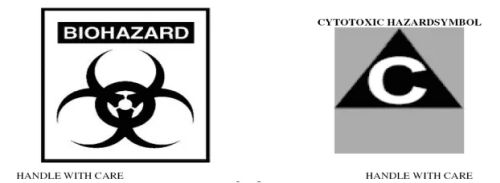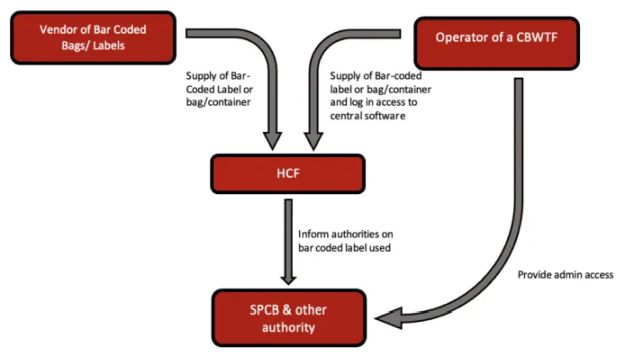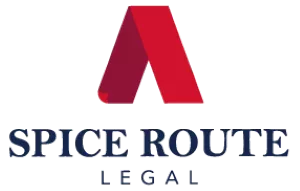- within Finance and Banking topic(s)
I. INTRODUCTION
Efficient management of Biomedical Waste ("BMW") is essential for protecting the environment and human health. The growing use of plastic disposables has led to the problem of BMW disposal and management. BMWs consist of infectious waste materials generated during the diagnosis and treatment of diseases.
India has ratified both the Basel Convention, 19891 and the Stockholm Convention, 2001,2 and is committed to regulating and handling hazardous waste. The Basel Convention focuses on safeguarding humans and the environment from the adverse effects of hazardous waste. At the same time, the Stockholm Convention intends to protect human health and the environment from persistent organic pollutants released from poor and inefficient waste management.
II. LAWS REGULATING THE MANAGEMENT OF BIO-MEDICAL WASTE
In India, the management of BMW is regulated by the Biomedical Waste Management Rules, 2016 ("Rules") formulated under the Environment (Protection) Act, 1986. The Rules define BMW as 'the waste and remains created during the diagnosis, treatment, or immunisation of humans or animals, as well as the waste produced in the research activities, or in the production or testing of biological or health camps.'
The Rules have a wide-ranging applicability, encompassing entities involved in generation, collection, storage, reception, handling, transportation, or disposal of BMW in any form. This includes hospitals, nursing homes, clinics, veterinary institutions, camps, among other things. There are also certain exceptions provided e.g., hazardous waste under the Hazardous and Other Wastes (Management and Transboundary Movement) Rules, 2016 and e-waste under the E-Waste (Management) Rules, 2016 fall under separate regulations.
The Rules impose duties on both the occupier and operator of the Common Bio-Medical Waste Treatment Facility ("CBMWTF"). An occupier controls the administration of the institution producing BMW, including a hospital, nursing home, health care facility, clinical establishment etc. In comparison, an operator is the owner or controller of a CBMWTF (which are facilities for the disposal and treatment of BMW).
Some important duties and responsibilities of both the occupier and operator of CBMWTF are mentioned below:
- Both the occupier and the operator are entrusted with the proper and secure disposal of BMW. This includes tasks such as segregating BMW, providing training and immunisation of healthcare workers handling BMW, implementing a bar-code system for bags or containers used to store BMW, maintaining data and logs, and seeking proper authorisation [Rules 4 and 5].
- For efficient management of BMW, the occupier must segregate
waste as per the following four colour categories and hand over the
segregated waste to CBWTF for treatment and disposal [Rule
4]:
- Yellow: Human anatomical waste, animal anatomical waste, soiled waste, expired or discarded waste, chemical waste, chemical liquid waste (separate collection system leading to effluent treatment system), discarded linen, mattresses, beddings contaminated with blood or body fluid, and microbiology, biotechnology, and other clinical laboratory waste.
- Red: Contaminated waste recyclables like waste generated from disposable items such as tubing, bottles, intravenous tubes and sets, urine bags, syringes, and gloves.
- White (Translucent): Waste sharps including metals (including used, contaminated and discarded metal sharps, needles, etc.).
- Blue: Broken, contaminated or discarded glass and metallic body implants.
- An occupier cannot establish an on-site treatment and disposal facility if a CBWTF is available within seventy-five kilometers [Rule 7(3)]. If such a facility is unavailable, occupiers shall set up requisite biomedical waste treatment equipment with prior authorisation from the prescribed authority [Rule 7(4)].
- The CBWTF operator must transport the BMW from the premises of
an occupier to any CBWTF in a vehicle which is labelled as provided
below [Rule 8(5)]:

- Both occupiers and operators of CBWTF have to apply to the State Pollution Control Board ("SPCB") or Pollution Control Committee (as applicable) for authorisation of generation, storage, disposal and handling of the BMW [Rule 10].
- Every occupier and operator of CBWTF must submit an annual report to the authorities with the details of BMW and the manner of its management throughout the year on or before the 30th of June every year [Rule 13].
- The occupier and operator are also obligated to maintain records for a period of five years [Rule 14].
- In case of any accident caused by the occupier or operator in the handling of BMW, they shall immediately intimate the prescribed authority and forward a report within 24 hours regarding remedial steps taken in Form I [Rule 15].
III. BAR CODE BASED WASTE MANAGEMENT SYSTEM
The Central Pollution Control Board has formulated guidelines for bar code waste management systems.3 It states that every Health Care Facility ("HCF") and CBWTF must establish a bar code/ QR code ("Code") system for bags or containers storing and transporting BMW. This Code system would help record the quantity of BMW waste being collected and disposed of and create an efficient system of tracking BMW from the source.

The Code should:
- have the colour as per the category of the waste in a block size of prescribed dimensions and fonts;
- be black in colour and white in the background;
- be legible on the label and should be good quality, tamperproof, waterproof, and adhesive;
- mention the first five characters of the name of the hospital, the area pin code, the state code, the description of bedded or non-bedded HCF, and the unique number of the HCF; and
- should follow the format and content as depicted in the
following picture:

The guidelines also direct HCFs and operators to follow the below modalities:
- Each HCF has to acquire access to the code waste management system software from the CBWTF operator. The software itself generates the reports of BMW.
- Where the HCFs have thirty beds or more, they shall obtain their own digital weighing machine and bar code scanner. While for HCFs with a number of less than thirty beds, scanning and weighing shall be conducted by the CBWTF operator on arrival at the institution.
- The CBWTF operator shall acquire and function a bar code waste management system software. The operators shall arrange bar code scanners for scanning.
- The CBWTF operator must carry a scanner along with a printer and weighing machine in its transportation vehicle, which is used for the collection of waste. After scanning, the scanner shall generate a print of a waste receipt, which is given to the HCF.
- The CBWTF operator shall supply Code labels or pre-printed colour-coded bags and containers to the occupier, on a charge basis. It may be directly procured by the occupier from the vendors.
- In case of failure to comply with the bar code software by the occupier or operator of CBWTF, action can be taken per the Rules.
IV. CONCLUSION
BMW management can be improved by making efforts to reduce or minimise wastage. The segregation of waste is a crucial aspect of BMW management, and though there are specific laws for BMW management yet proper segregation of BMW remains unimplemented. It is important to focus on the efficient execution of the segregation of waste for BMW management. Healthcare professionals should be equipped with training programs on handling BMW, and efforts should be made to raise awareness among the population about the potential hazards associated with BMW.
One important consideration here is that, the Rules do not elaborately specify the management of BMW data obtained by SPCB from the occupiers, operators of CBWTF, bar code management software, and transportation vehicles. The Rules should specify the procedures for conducting analysis of the data by the authorities and should add the proper measures that can be taken after analysing data.
The setback in the implementation is primarily due to the lack of sufficient funds, as the segregation, training, and bar code management system can require enormous costs.
Footnotes
1. https://www.basel.int/Portals/4/Basel%20Convention/docs/text/BaselConventionText-e.pdf
2. http://chm.pops.int/portals/0/repository/convention_text/unep-pops-cop-convtext-full.english.pdf
3. Guidelines for Bar Code System for Effective Management of Bio-medical Waste by Central Pollution Control Board on 27th March 2019, available at, https://cpcb.nic.in/uploads/Projects/Bio-Medical-Waste/Guidelines_for_Bar_Code_System_for_HCFs_and_CBWTFs.pdf
The content of this article is intended to provide a general guide to the subject matter. Specialist advice should be sought about your specific circumstances.





